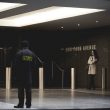Officials Claim Screeners Report “Misleading”
The Transportation Safety Administration (TSA) calls a report misleading claiming security screeners at O’Hare missed about 60 percent of bomb materials and explosives hidden in carry-on items during recent tests.
According to the TSA report, 60 percent of bomb materials and explosives hidden in carry-on items by undercover TSA agents were missed by screeners at O’Hare, according to a release from U.S. Rep. Mark Kirk. At Los Angeles International Airport, screeners missed 75 percent of bomb materials, while at San Francisco International, a private screening company missed 20 percent of bomb materials.
But TSA spokeswoman Lara Uselding, who says tests are conducted at every airport in the nation, told Sting Wire Reports that the leaked figures actually reflect 2006 test results and things have improved in the past year.
“We are seeing better test scores at airports than are reflected in the report. We are doing a wider variety of tests and more tests,” she says. “Under TSA pay for performance officers must show improvement or be pulled off the line.”
Kirk, who represents the north suburbs, cited the apparent security lapses at the nation’s largest airports in calling for a Security Summit at O’Hare with Homeland Security and TSA officials to schedule retraining, establish higher standards and upgrade accountability for security at the nation’s busiest airport, according to a release.
“Their [TSA’s] mission is to protect 75 million flyers at O’Hare and millions around the country,” Kirk said in the release. “This report shows that there are problems that must be addressed immediately by the secretary of Homeland Security, secretary of transportation and TSA officials at O’Hare.”
In calling for a security summit, Kirk says, “I worry that a TSA screener working for the federal government at O’Hare misses more threats than the private screening company protecting San Francisco. I am calling on the Departments of Homeland Security and Transportation to … correct these security lapses.”
According to Sting Wire Reports, Uselding says that’s already happening. “In fall 2005, TSA began an aggressive focus on improving recognition of improvised explosive devices (IED). By fall 2006, TSA deployed 5,800 bomb test kits to the field and today conducts 2,500 IED recognition tests a day. Tests are conducted every day at every airport at every checkpoint and on every shift.”
“Our goal is to have the workforce so familiar with IEDs and their components that recognition of them becomes rote. We challenge capabilities to the extreme and we continue to raise the bar,” the TSA spokeswoman says.
Uselding says the TSA designs testing with an expectation of failure, so “the results of these tests are not appropriate for public dissemination.”
Tests are conducted with “an in-depth knowledge of standard operating procedures and the capabilities of our technology. If our security officers got it right every time, then we are not pushing the envelope and challenging them to improve. Every failed test is a lesson and helps us to build a stronger workforce.”
And the tests get more and more difficult as security improves, Uselding says. “As scores start to improve on tests, our security experts change their tactics and devise even more difficult tests. Once security officers improve to that level of testing the bar is raised again. By constantly challenging our workforce we create an ever strengthening layer of security at the checkpoint.”
The City Department of Aviation and local FAA office refused to comment to Sting Wire Reports on the report, referring all questions to the TSA.



















